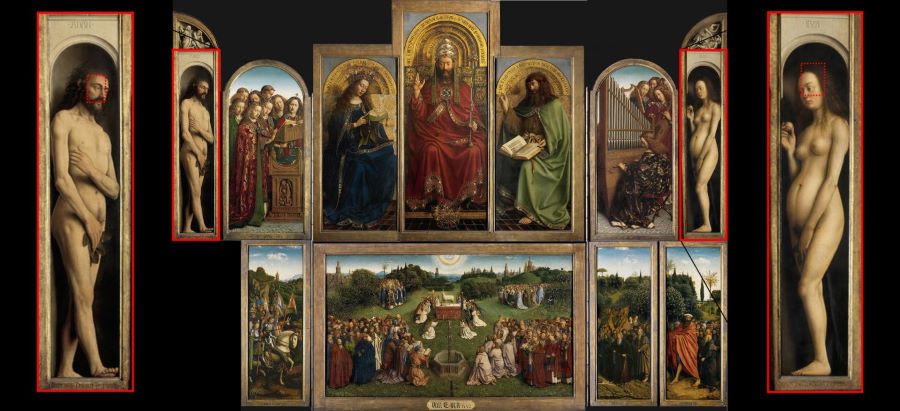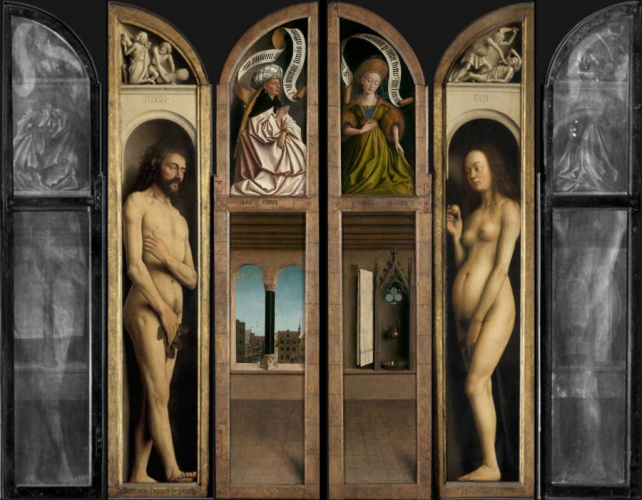
The 15th-century Ghent Altarpiece is a multi-panel artwork painted by Dutch brothers Hubert and Jan van Eyck in St Bavo's Cathedral in Ghent, Belgium. Researchers from the National Gallery, Duke University and UCL developed an algorithm to study mixed x-ray images containing features from the front and back of the painting's double-sided panels, which scientists have deconstructed into two clear images.
https://www.theengineer.co.uk/ai-medical-diagnostics/
X-ray images are a valuable tool for examining and restoring paintings as they can help to establish a piece's condition and provide insights into an artist's technique. However, the penetrating nature of x-rays means that everything in its path will contribute to the resulting image, often making the results difficult to interpret. This is particularly true for panels painted on both sides, or where an artist has re-used a canvas.
By separating the complex x-ray images, the new algorithm enables art historians and heritage scientists to better understand Old Master paintings, and the information revealed can help experts when protecting and restoring delicate pieces.
"This approach demonstrates that artificial intelligence-oriented techniques -- powered by deep learning -- can be used to potentially solve challenges arising in art investigation," said research lead Dr Miguel Rodrigues, from UCL’s Department of Electronic & Electrical Engineering.

"We'd like to see the impact that the development of similar AI-oriented approaches will have on our ability to reveal other hidden features in a painting, such as earlier concealed designs."
The Ghent Altarpiece images are part of a set of high-resolution pictures acquired using a variety of techniques as part of the artwork’s ongoing conservation, which is being carried out by Belgium’s Royal Institute for Cultural Heritage (KIK-IRPA). According to UCL, these images are providing a treasure trove of data to which AI analysis can be applied, and the technique could have applications to artworks all over the world.
"The application of AI to x-ray image processing will provide very useful tools to decrypt complex technical images,” said Hélène Dubois, head of the Conservation Project of the Ghent Altarpiece, Royal Institute for Cultural Heritage (KIK-IRPA). “The structural weaknesses of the wooden supports and of the ground and paint layers could be diagnosed with more precision.
"These images will also help to understand the brothers Van Eyck's techniques and the changes carried out in the course of the successive execution of this unique masterpiece. This new development of the use of the traditional x-ray has great potential for countless applications in conservation of irreplaceable works of art."




Labour pledge to tackle four key barriers in UK energy transition
I'm all for clarity and would welcome anyone who can enlighten me about what Labour's plans are for the size and scale of this Great British Energy....